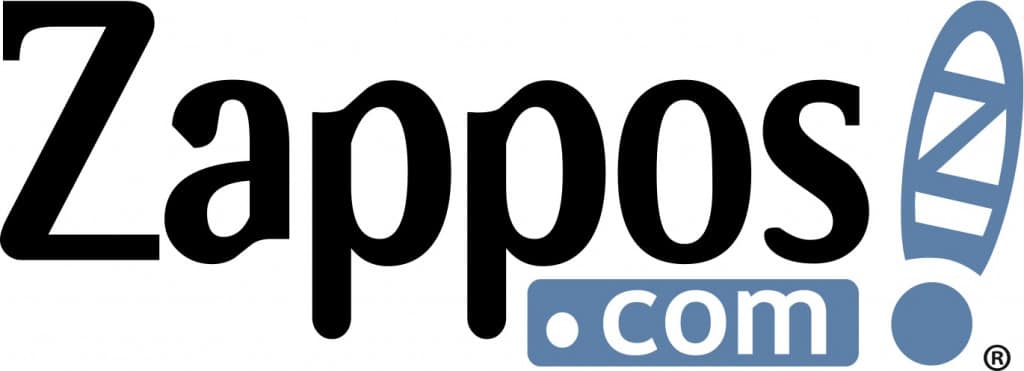
Zappos founder and business icon Tony Hsieh passed away on the 27th of November and continues to be widely mourned.
 From 2020 it’s hard to describe how big a deal Zappos was during the earlier days of e-commerce.
From 2020 it’s hard to describe how big a deal Zappos was during the earlier days of e-commerce.
Back when people were still saying “you can’t sell tangibles over the web,” and when everyone was convinced that e-commerce’s real (and perhaps only) competitive advantage was discounting, Zappos managed to change all that.
In a manner similar to Amazon, Zappos made the shopping experience itself the reason for buying from Zappos.
The selection, the customer ratings, the images and videos — not to mention the express shipping and customer service — were all much more important to most shoppers than any discount.
In this sense, Zappos remained a case study that buyers would respond to being treated like humans, even in a “disintermediated,” online world.
Combine that with the legend of Zappos internal culture that treated employees amazingly well, and Zappos was like the Southwest Airlines of the digital frontier.
All of which made Tony Hsieh an entrepreneurial and business icon.
If you wanted to talk about business culture, you couldn’t help but mention Tony and Zappos.
So with all that, what do I personally take away from Tony’s legacy?
Three things:
- Long term thinking is a strategic advantage
- It costs more to deliver great service, but not much more
- Culture eats strategy for breakfast
Let’s look at the Long-Term thinking bit first.
Long-Term Thinking & Strategic Advantage
Let me start this section by quoting from Tony Hsieh’s best friend’s open letter to his dearly departed buddy, as published in Forbes:
“Quincy House Grille. Eons ago, we met at a dorm party at Harvard and we bonded over your crazy idea to run the Quincy House Grille (a late-night, student-run food joint) for two years with your roommate Sanjay Madan. You talked about buying a pizza oven, renting arcade games, and putting in TVs to play reruns of Star Trek or your favorite movie at the time, Pretty Woman.
You never saw challenges, you only saw opportunities. And you saw an opportunity that no junior at Harvard had ever contemplated. You said it was simple – everyone else bidding was a senior and was calculating their bid by assuming they would run the Grille for just one year. “Assuming all bidders are rational, I can afford to outbid them, so logically, I should bid ‘highest bid + $1’,” and you won. Harvard awarded you a B.A. in Computer Science. They should have included a B.A. in Game Theory as well”
Right from Tony’s first entrepreneurial venture, he understood that long-term thinking was a strategic advantage.
Because he planned on operating his student grill twice as long as other bidders, he could afford to invest more in the place.
This lesson applies in numerous ways to every aspect of business and life, but I want to highlight two of them, most relevant to small business growth and advertising:
- The advantages of brand building over direct response (DR) advertising manifest more fully in the long term than the short term. The more long-term your thinking, the more you’ll concentrate on building a legacy and a brand. The most academically rigorous research comparing DR to branding shows them roughly equal in performance over the course of a year, with branding outperforming DR moderately at two years, and blowing the doors of DR by three years. If you set your advertising budget and decisions based on ROI for next month or next quarter, you’ll never prioritize long-term brand building, and that will become a strategic liability. But if you think long-term, you’ll invest more heavily in brand building which will build into a strategic advantage within a year’s time and continue to build for years and decades to come. So how long term is your thinking?
- The advantages of customer acquisition increase exponentially the longer you plan on keeping that customer. And it is only long-term thinking that lets you make the strategic decisions necessary to ensure customer retention and loyalty. If you expect to have a customer for only a single transaction, you’d better make sure you make your money on that transaction! But at the same time, attracting customers for a transactional purchase pretty much requires attracting them on price. Making this a catch-22 for failure that drives most low-priced competitors eventual doom loop of defeat. On the other hand, if you understand this transaction to be the first in a longer-term relationship, made up of a series of transactions, then you can attract the customer on the basis of shared values AND you can likely afford to introduce them to your company and services/products through a “loss leader” price. This is the strategy of empire building giants. It’s why AOL was willing to give away free CDs with the first month’s service included. And why Amazon could invest so heavily in the kindle e-reader and can underprice their Kindles. Thinking long term is a strategic advantage. But going deeper, this is also why companies like Zappos can invest so heavily in customer service and customer experience. They’re confident making that investment because their long-term thinking tells them it’ll pay off with repeat orders and customer retention.And that last point about long-term thinking brings us to the next lesson from Tony…
It Costs More to Deliver Great Service, But Not Much More
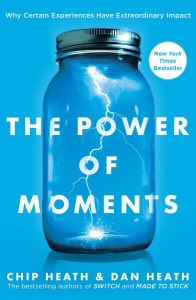 If you look back to Tony’s plans for the Quincy House Grille, they didn’t just include running it for two years instead of one.
If you look back to Tony’s plans for the Quincy House Grille, they didn’t just include running it for two years instead of one.
They also included: buying a pizza oven, renting arcade games, and putting in TVs to play reruns of Star Trek or Pretty Woman.
In other words, they focused on the customer experience right out of the gate. And in much the same way that Tony focused on the shopping experience with Zappos:
- They made finding the right shoe easy with searching and sorting functions that are par for the course now, but major investments back then.
- They made evaluating the shoe over the web not only possible, but enjoyable, with multiple pictures from every angle, videos, and multi-faceted reviews.
- And they made the ordering and returning experience as painless as possible, with simple checkouts, expedited shipping, and free returns.
- Finally, they made their phone support experience magical, with happy, helpful, U.S. based staff, empowered to go above and beyond whenever necessary.
But what gives this lesson teeth is the realization that, yes, improving the customer experience does, in fact, cost more. There is an investment that has to be made.
It costs money to take those pictures. It takes time, effort, and money to shoot those videos. Review functionality was NOT plug and play when Zappos rolled it out. And hiring and training phone staff to deliver that quality of service is not only expensive but resource intensive.
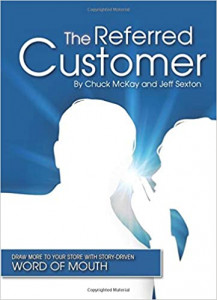 So anyone that talks about delivering great customer experience or service without taking into account the cost of this is an idiot you would do best to ignore.
So anyone that talks about delivering great customer experience or service without taking into account the cost of this is an idiot you would do best to ignore.
And yet, when combined with long-term thinking, investing in the customer experience leads to disproportionately greater returns.
In a world where rational competitive advantage either doesn’t exist or doesn’t last long, personal preference rules the roost.
And personal preference largely comes down to intangibles and experiences.
- What does this brand stand for and am I sympatico with those values and attitudes?
- Do I like the experience of buying from them and using their products and services?
- Do they treat me right?
And while I think there are some flaws with the simplistic notion of “over-serving the customer,” the idea of engineering a better experience and investing in the technologies and people to deliver that experience is not only fundamentally sound, but increasingly necessary to compete.
For moving beyond “over-serving” to strategically engineering and investing in better experiences, I recommend the following three books:
- Be Like Amazon, by Bryan & Jeffrey Eisenberg
- The Power of Moments, by the Heath Brothers
- The Referred Customer, by Chuck McKay and yours truly
Just understand that great customer service is more or less impossible without great people and an equally great work culture, which brings us to the last lesson…
Culture Eats Strategy for Breakfast
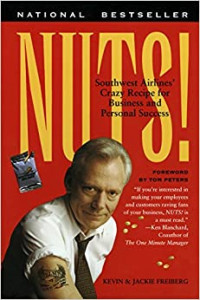 Culture does eat strategy for breakfast!
Culture does eat strategy for breakfast!
And I write those words as someone who spends a great deal of my professional life crafting and implementing strategy. Business growth strategy, messaging strategy, etc.
So why do I agree with this business cliche?
Simple: if strategy represents today’s to-do list, then culture represents all the yesterdays that have made you who you are today.
When those two things come into conflict, it’s culture that usually wins.
As can be attested to by anyone who’s ever gone on a diet or tried to reform a bad habit.
I’m not saying change is impossible. I’m just saying that America’s $70 Billion weight loss industry would indicate that cultural inertia is usually the way to bet.
And when it comes to companies competing against one another for market dominance, the thing about strategy is that:
- It is always impacted by both the customer and competition
- It must be implemented by people
The first point is admirably summed up by the military phrase: no battle plan survives first contact with the enemy.
This is the entire point behind agile entrepreneurship, in fact. You get that minimal viable product and put it out to the market so as to get that all important feedback from the customer and the competition, that you can then roll into product 2.0.
And here’s the thing about that: change involves culture. The better the culture, the more agile and positive-change-friendly the company.
If your wonderful strategy necessarily involves adapting and innovating tactics to implement — which it will — then company culture is the key factor that determines the effectiveness of your brilliant strategy.
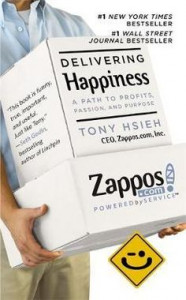 And that brings up the people part of this. You can’t attract good people into a company that doesn’t already have good co-workers and a good boss.
And that brings up the people part of this. You can’t attract good people into a company that doesn’t already have good co-workers and a good boss.
And you can’t attract those things without having a great workplace environment and strong values, etc.
In other words, your ability to have great people capable of implementing great strategy (especially one centered around customer experience and long-term customer retention) without a fantastic culture.
It is no secret that Tony Hsieh was absolutely the “Company Culture Guy.”
There’s a reason his book on company culture became a NYT Best Seller with over 1800 5-star reviews on Amazon.
If anyone ever talked about company culture, they were going to talk about one of two companies (and most often both of them): 1) Southwest Airlines, and 2) Zappos.
Other companies took tours of Zappos just to see how they managed their culture.
This is a company that pays new employees thousands of dollars NOT to stay, just to weed out those who don’t truly love it.
Culture is the key.
And from an advertising standpoint, great messaging is always a reflection of the values and culture of the company. The two are intrinsically tied together.
That’s why there are no generic advertising campaigns that are worth a shit. If it’s not custom to you, it’s probably worthless.
And those are the lessons I’m taking away from Tony.
If you’d like help implementing any of them, let me know.
- Pro Tip: Talk to Your Customers Like Friends - April 23, 2024
- Brands Are Small Things — And That’s a Good Thing! - April 16, 2024
- The Two Universal Appeals — Understanding the “Cult” of Cult Branding - April 9, 2024

 “
“